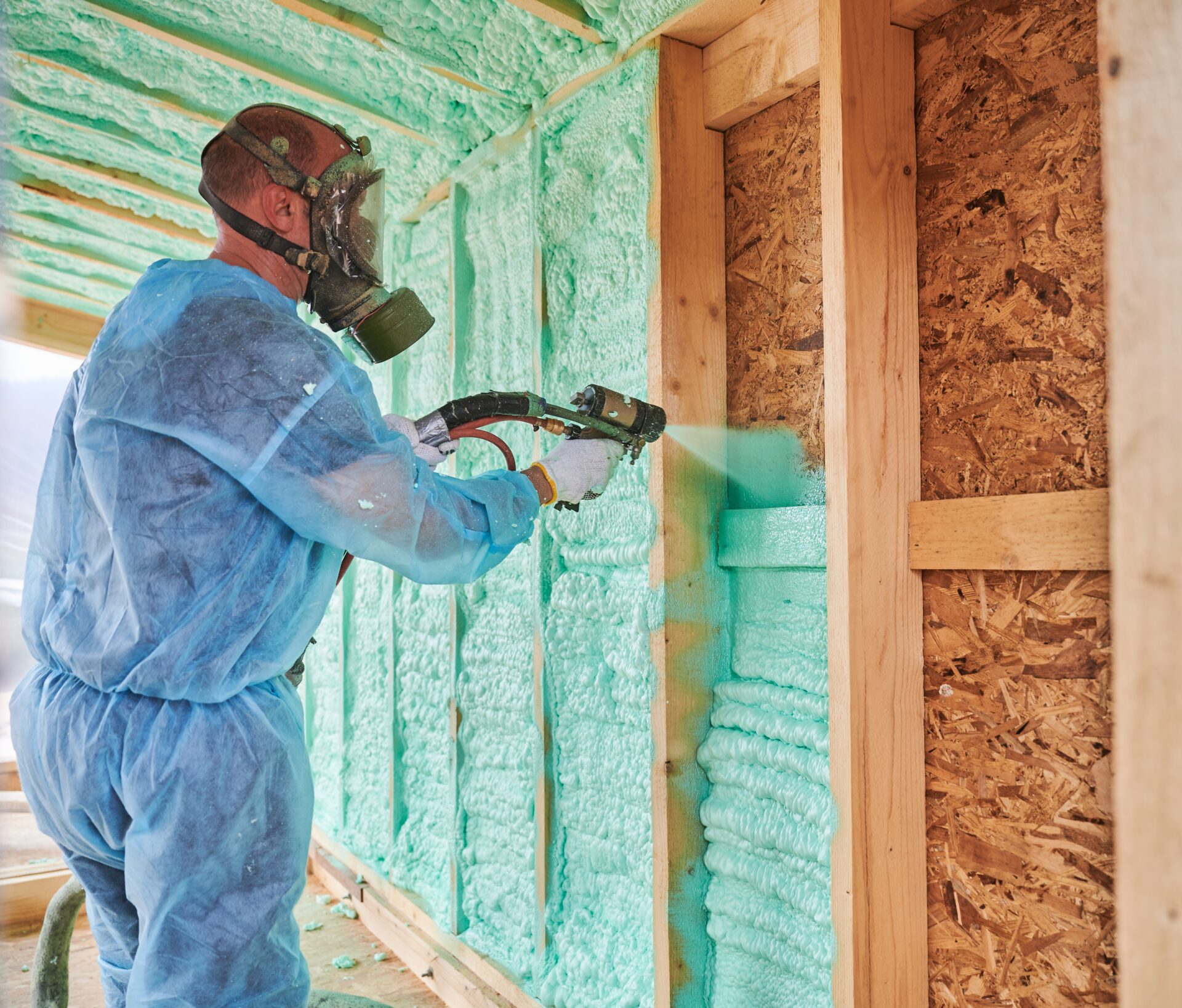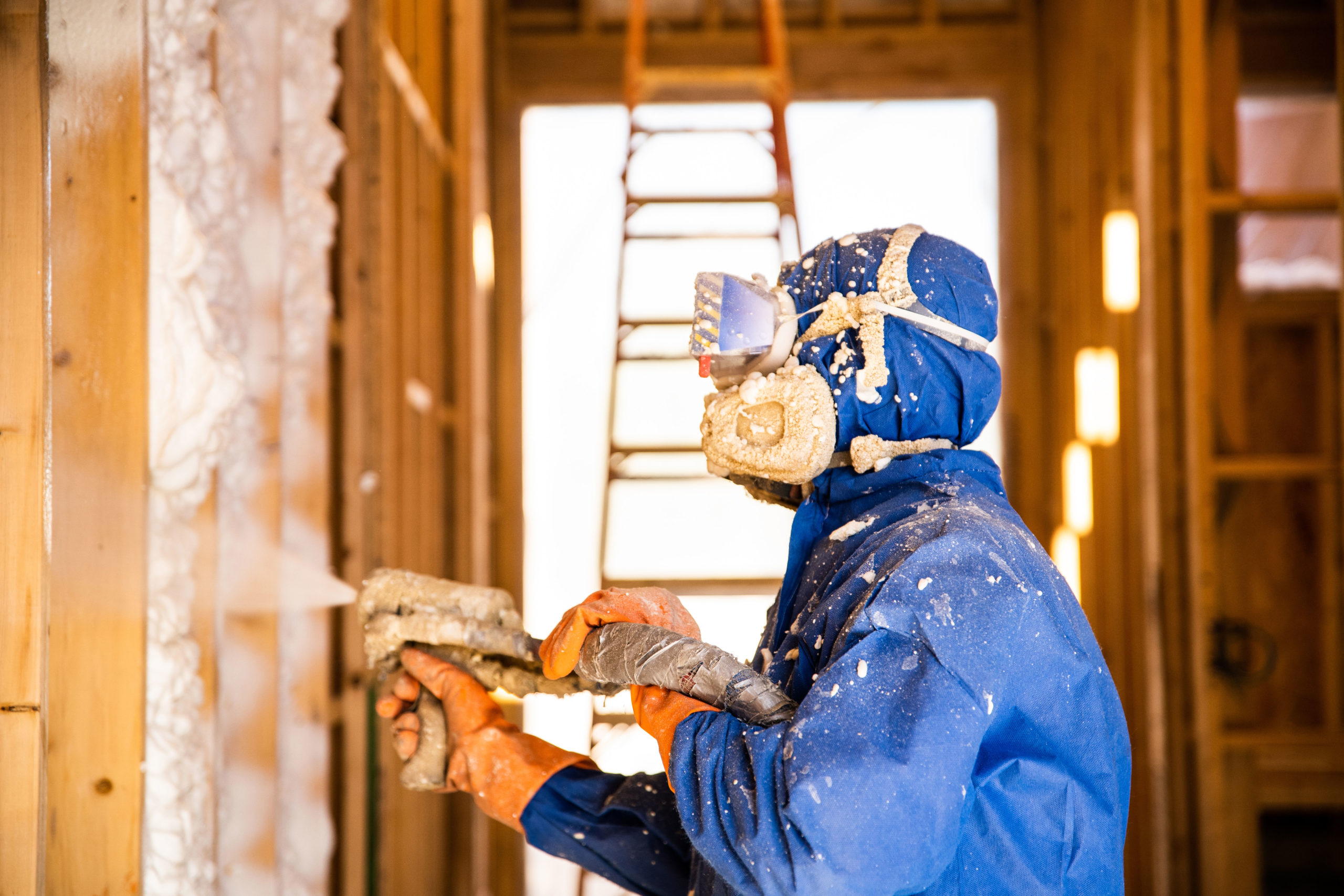Just How Spray Foam Can Improve Energy Effectiveness in Any Kind Of Structure
Spray foam insulation has become an essential solution for boosting energy performance throughout numerous structure types. By producing an impermeable seal that decreases air leakage, it effectively regulates interior climates while dramatically decreasing home heating and air conditioning expenses. Moreover, its remarkable R-value and moisture-resistant buildings contribute to long-term energy savings and boosted structure durability. As homeowner progressively look for lasting options, the ramifications of spray foam insulation extend beyond plain energy savings. The full range of its advantages, nonetheless, warrants a more detailed exam of exactly how it can change power monitoring methods in both property and commercial settings.
Comprehending Spray Foam Insulation
Spray foam insulation is significantly identified for its premium thermal efficiency and convenience in various applications. Made up primarily of polyurethane, this insulation product is applied as a fluid that increases upon contact, filling spaces and creating a smooth barrier. This one-of-a-kind property permits spray foam to satisfy irregular surfaces, making it a perfect option for both commercial and domestic frameworks.

Application of spray foam insulation is normally executed by trained professionals making use of specific equipment, guaranteeing ideal performance and safety - Spray Foam. The healing process is rapid, enabling fast installment and marginal disruption. Because of this, spray foam insulation is increasingly being utilized in brand-new construction and retrofitting tasks as a result of its capacity to boost structural integrity while boosting total energy effectiveness in structures
Advantages of Power Performance
Power efficiency plays a critical function in decreasing functional prices and minimizing ecological effect throughout numerous industries. By maximizing energy use, organizations and home owners can accomplish substantial financial savings on energy bills, which directly enhances economic efficiency. Reliable power intake implies less dependence on nonrenewable fuel sources, thus adding to a reduction in greenhouse gas emissions and advertising a more sustainable environment.
Additionally, energy-efficient structures typically experience raised property values. As power costs rise and sustainability becomes a priority for customers, properties with improved energy performance features are much more eye-catching on the market. This pattern urges financial investment in energy-saving innovations, which can additionally drive innovation and economic development.
Along with ecological and financial advantages, energy efficiency can also boost the overall comfort and health and wellness of interior areas. Proper insulation and efficient cooling and heating systems aid maintain consistent temperatures, decreasing drafts and humidity degrees, which consequently can bring about far better interior air high quality.
Eventually, the benefits of energy performance prolong beyond prompt financial savings, cultivating a durable economic situation, promoting environmental stewardship, and enhancing the quality of life for residents in any structure.
Exactly How Spray Foam Functions
Commonly used as a fluid, spray foam expands swiftly upon contact with surfaces, forming a solid obstacle that efficiently secures voids and fractures. This special residential property results from its chemical structure, largely including polyols and isocyanates, which respond when blended to create a foam that fills up spaces and sticks to various materials, including concrete, steel, and wood.
When applied, the foam broadens to several times its original volume, ensuring a tight seal that avoids air leak. This process dramatically reduces thermal bridging, which happens when heat transfers via products, bring about power loss. The foam's high R-value, an action of thermal resistance, contributes to enhanced insulation by minimizing heat transfer in between the exterior and interior settings.
Furthermore, spray foam is resistant to wetness and bugs, further enhancing its efficiency in keeping power effectiveness. Its application can be customized to different locations, consisting of attics, walls, and crawl rooms, enhancing insulation across a building. Spray Foam. On the whole, the innovative layout and application approach of spray foam make it an effective option for enhancing power efficiency in any kind of structure, causing minimized energy prices and an extra sustainable constructed environment

Applications in Different Structures
Many applications of spray foam insulation can be located throughout numerous building types, boosting power effectiveness and convenience. In domestic homes, spray foam is commonly made use of in attic rooms and walls to develop a seamless obstacle versus air leaks, substantially decreasing home heating and cooling needs. This application is particularly helpful in site link older homes, where traditional insulation may be insufficient.
In commercial structures, spray foam insulation is put on roof covering systems and outside wall surfaces, which aids to boost thermal performance and shield against moisture intrusion. Its light-weight nature makes it an excellent choice for retrofitting existing frameworks without including significant weight. Additionally, spray foam can be made use of in commercial setups to shield pipelines and storage space tanks, preserving temperature level control for delicate products.
Institutional structures, such as hospitals and schools, benefit from spray foam insulation by guaranteeing a regular indoor climate that supports passenger comfort and health. The versatility of spray foam enables it to adjust to various structure shapes and dimensions, making it a preferred selection for architects and contractors looking for efficient insulation solutions. Overall, spray foam insulation works as a vital component in accomplishing energy-efficient buildings throughout all fields.
Long-Term Price Cost Savings
Spray foam insulation supplies considerable long-term price financial savings for structure owners and occupants by reducing power intake and lowering utility costs. By giving a superior air seal, spray foam minimizes the infiltration of outdoors air, therefore enhancing the thermal performance of a structure. This leads to more reliable heating and cooling procedures, which can result in significant decreases in power expenses over time.
Along with prompt financial savings on energy costs, the durability and long life of spray foam insulation add to its financial benefits. Unlike typical insulation materials, which might droop, Check Out Your URL settle, or wear away, spray foam maintains its effectiveness for decades, decreasing the demand for constant substitutes or repairs. This longevity equates to lower upkeep costs and much less disruption for owners.
Additionally, structures outfitted with spray foam insulation commonly appreciate an increase in home worth, making them more enticing to possible buyers or tenants. As power performance comes to be progressively prioritized, residential properties with efficient insulation remedies attract attention in the marketplace. Inevitably, the assimilation of spray foam insulation not just boosts comfort however additionally represents a strategic investment that yields substantial financial benefits over the long-term.
Verdict
In verdict, spray foam insulation offers as an important part in enhancing power efficiency across varied structure types. Its capability to create a smooth obstacle versus air leakage, combined with moisture-resistant residential properties and high r-values, significantly decreases power usage and linked expenses. The implementation of spray foam not just adds to constant indoor temperature levels yet additionally raises residential or commercial property value, underscoring its duty as a prudent investment for both business and property buildings.
Spray foam insulation has emerged as a critical solution for improving energy performance throughout various building types. Spray Foam. As an outcome, spray foam insulation is increasingly being used in brand-new construction and retrofitting tasks due to its capability to improve architectural honesty while boosting overall energy performance in buildings
In general, the innovative design and application approach of spray foam make it an effective service for improving power effectiveness in any type of framework, leading to lowered energy expenses and a much more sustainable built setting.
Many applications of spray foam insulation can be discovered across different structure types, enhancing energy performance that site and convenience.In final thought, spray foam insulation offers as an important part in improving energy performance throughout diverse structure types.